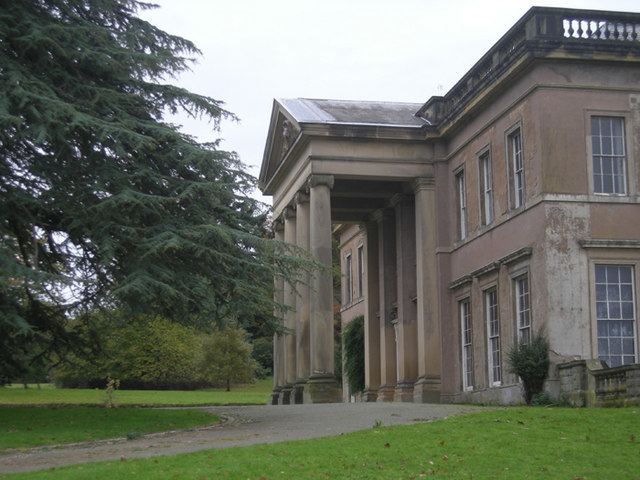Occupation Architect Name Benjamin Gummow Died 1844 | Role Architect | |
 | ||
Alma mater Probably a pupil of S P Cockerell | ||
Benjamin Gummow (1766–1840) was an architect who worked from Ruabon near Wrexham in Wales. He worked almost exclusively for Sir Watkin Williams Wynne of Wynnstay, Ruabon and the Grosvenor family of Eaton Hall near Chester. He was born in St Endellion in Cornwall in 1766 and died at Ruabon in March 1844.
Contents
Architectural career

Gummow is first noted as a clerk of the works for the architect Samuel Pepys Cockerell for the alterations to St Margaret's Church, Westminster in 1799–1802. Gummow was associated with the architect William Porden who had been a pupil of Cockerell and c.1785 Porden was appointed surveyor to the Grosvenor Estates. In 1802 Robert Grosvenor succeeded to the title of Earl Grosvenor, and shortly afterwards commissioned Porden to rebuild Eaton Hall near Chester. Gummow was appointed supervising architect for the project by Porden and at this time he moved to the Chester area. The project lasted between 1803 and 1814. Gummow and Porden did not get on too well and in 1807 Porden said to Earl Grosvenor that Gummow "speaks without thinking, and is the most inconsistent of men that I ever met". Gummow, apart from working at Eaton Hall also undertook the building of Littleton Hall, Christleton in Cheshire in 1806, additions to Nercwys Hall between 1813 and 1820 and the building of a portico and other alterations for the Ormsby-Gores at Brogyntyn, near Oswestry in Shropshire
By 1819 he started to be employed as the surveyor of Sir Watkin Williams-Wynn of Wynnstay's estates at Ruabon near Wrexham. In 1821 Porden was forced to resign from the surveyorship of the Grosvenor Estates and Earl Grosvenor then appointed Gummow to add further Gothic wings to Eaton Hall. In doing this Gummow was working and modifying plans that had already been drawn up by Porden. Gummow was now working for both Sir Watkin and Earl Grosvenor and in 1827 he told Cockerell that "he has always had £300 per ann. from Lord Grosvenor and Sir W.W. and is not allowed any other charge or profits – but has his lodgings and livings – out of this he has saved an easy independence". He, however, did supervise the building, probably to plans by drawn up by John Buckler of Halkyn Castle, Flintshire (1824–7) and Pool Park, Denbighshire (c1827-8), re-casing and altering the house at Wynnstay as well the building of a porch at Chirk Castle in 1831. Sir Howard Colvin summed up Gummow's work as follows "Though not an architect of the first rank, his additions to Eaton Hall successfully maintained the elegant rococo Gothic of the main block designed by Porden and at Brogontyn his Ionic portico is a handsome addition to an existing classical house".
Churches and chapels
Country Houses
The Gummows- A family of architects and builders
Benjamin Gummow is likely to be related to other architect and builders who were called Gummow and were who working in the Wrexhan and Shrewsbury areas. However, in most cases the exact relationship between them is uncertain. Benjamin Gummow married Mary Ellis of Eccleston, the parish in which Eaton Hall stood, in 1810. As Gummow was 44, it appears this was his second marriage. Presumably this wife died and he embarked on a third marriage in 1827, when he married at Ruabon. Benjamin Gummow had a brother Michael Gummow (d.1804) who was also an architect. Benjamin and Michael Gummow appear to have worked together on the rebuilding of Cleveland House St. James, Westminster around 1800
